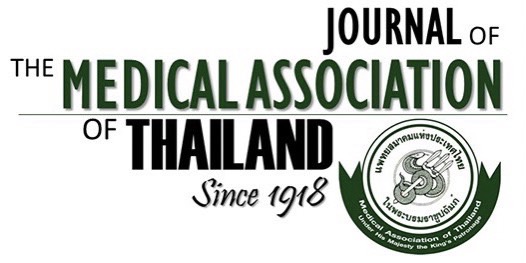Evaluation of In Vitro Anti-inflammatory Activity, Cytotoxic Activity and Physicochemical Properties of Activated Carbon - Treated Sahasthara Ethanolic Extract
Papawee Sookdee BATM*, Rathapon Asasutjarit PhD**, Sukitaya Veeranondha MSc***, Arunporn Itharat PhD****,*****
Affiliation : * Student of Master of Science Program (Applied Thai Traditional Medicine) Faculty of Medicine, Thammasat University, Pathumthani, Thailand ** Department of Pharmaceutical Sciences, Faculty of Pharmacy, Thammasat University, Pathumthani, Thailand *** National Center For Genetic Engineering and Biotechnology, National Science and Technology Development Agency (NSTDA), Thailand Science Park, Pathumthani, Thailand **** Department of Applied Thai Traditional Medicine, Faculty of Medicine, Thammasat University, Pathumthani, Thailand ***** Center of Excellence on Applied Thai Traditional Medicine Research (CEATMR), Faculty of Medicine, Thammasat University, Pathumthani, Thailand
Background : Sahasthara (SHT) is a Thai traditional remedy for relieving muscles and bones pain. Presently, topical dosage
forms of SHT extract (SHTE) are used instead of oral dosage forms of SHT to avoid gastrointestinal side effects such as
nausea and vomiting. However, topical products of SHTE have not been accepted by some patients because of unpleasant odor
and color of SHTE used in formulations. Therefore, to increase patient’s acceptance, the unpleasant odor and color of the
crude extract should be removed before use as an active ingredient in the products.
Objective : To determine an optimum dose of activated carbon for improving physical appearance of SHTE and to evaluate its
anti-inflammatory activity, chance of being skin irritant and physicochemical properties of SHTE after being treated with
activated carbon.
Material and Method: SHTE was treated with various amounts of activated carbon and investigated for its inhibitory activity
on nitric oxide production in RAW 264.7 cells and potential for being a skin irritant by MTT assay on skin fibroblasts.
Measurement of lightness values, piperine contents by HPLC and pH values of treated SHTE were also performed.
Results : SHTE treated with 0%, 10% and 20% activated carbon showed an anti-inflammatory activity with IC50 values of
4.15+0.58, 7.27+0.53, 7.92+0.23 μg/mL, respectively. None of them was toxic to skin fibroblasts. Lightness of SHTE and
piperine contents of such extracts decreased with increase in doses of activated carbon. On the other hand, the higher amount
of activated carbon used, the higher is the pH value.
Conclusion : SHTE treated with 20 % w/w activated carbon resulted in better physical appearance of SHTE than that of either
untreated- or 10% activated carbon-treated SHTE. Yet, it retained an anti-inflammatory activity with no potential for being a
skin irritant. Therefore, treating SHTE with 20 % w/w activated carbon can be further used for preparation of SHT topical
formulations.
Keywords : Activated carbon, Anti-inflammatory activity, Physicochemical properties, Sahasthara remedy, Thai traditional medicine



